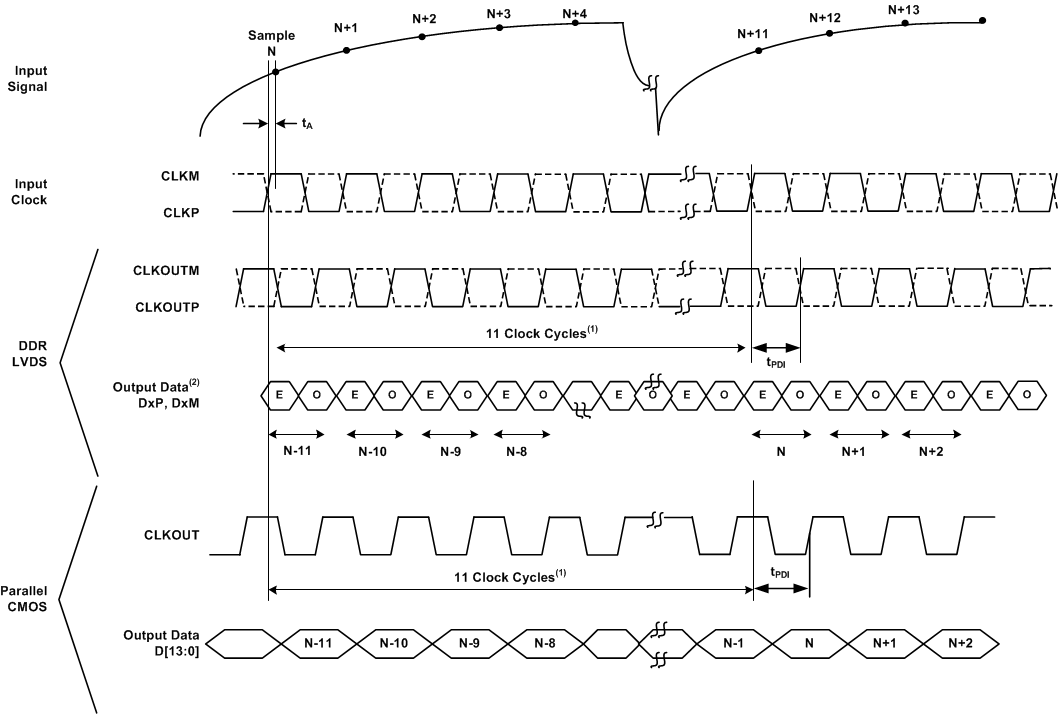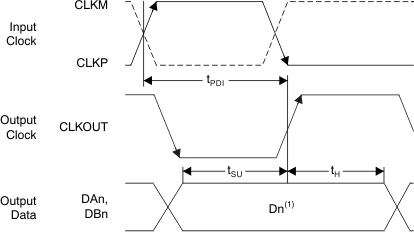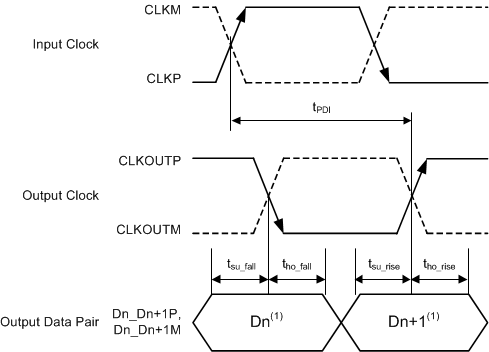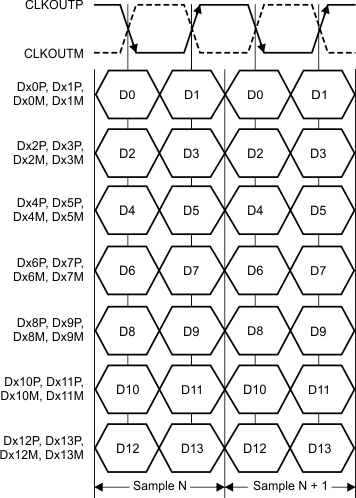ZHCSAK5C December 2012 – December 2015 ADS42B49
PRODUCTION DATA.
- 1 特性
- 2 应用
- 3 说明
- 4 修订历史记录
- 5 Description (continued)
- 6 ADS424x and ADS422x Family Comparison
- 7 Pin Configuration and Functions
-
8 Specifications
- 8.1 Absolute Maximum Ratings
- 8.2 ESD Ratings
- 8.3 Recommended Operating Conditions
- 8.4 Thermal Information
- 8.5 Electrical Characteristics: ADS42B49 (250 MSPS)
- 8.6 Electrical Characteristics: General
- 8.7 Digital Characteristics
- 8.8 Timing Requirements: LVDS and CMOS Modes
- 8.9 Serial Interface Timing Characteristics
- 8.10 Reset Timing (Only When Serial Interface is Used)
- 8.11 LVDS Timings at Lower Sampling Frequencies
- 8.12 CMOS Timings at Lower Sampling Frequencies
- 8.13 Typical Characteristics
- 9 Parameter Measurement Information
- 10Detailed Description
- 11Application and Implementation
- 12Power Supply Recommendations
- 13Layout
- 14器件和文档支持
- 15机械、封装和可订购信息
9 Parameter Measurement Information

1. With an external 100-Ω termination.
Figure 37. LVDS Output Voltage Levels

1. The ADC latency after reset is 11 clock cycles. Overall latency = ADC latency + tPDI.
2. E = even bits (D0, D2, D4, and so forth); O = odd bits (D1, D3, D5, and so forth).
Figure 38. Latency Timing Diagram

1. Dn = bits D0, D1, D2, and so forth of channels A and B.
Figure 39. CMOS Interface Timing Diagram

